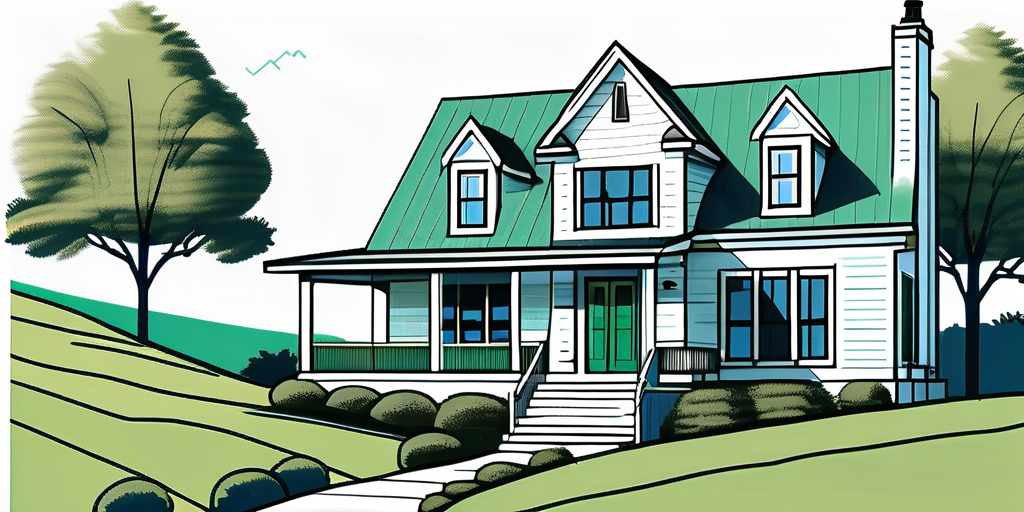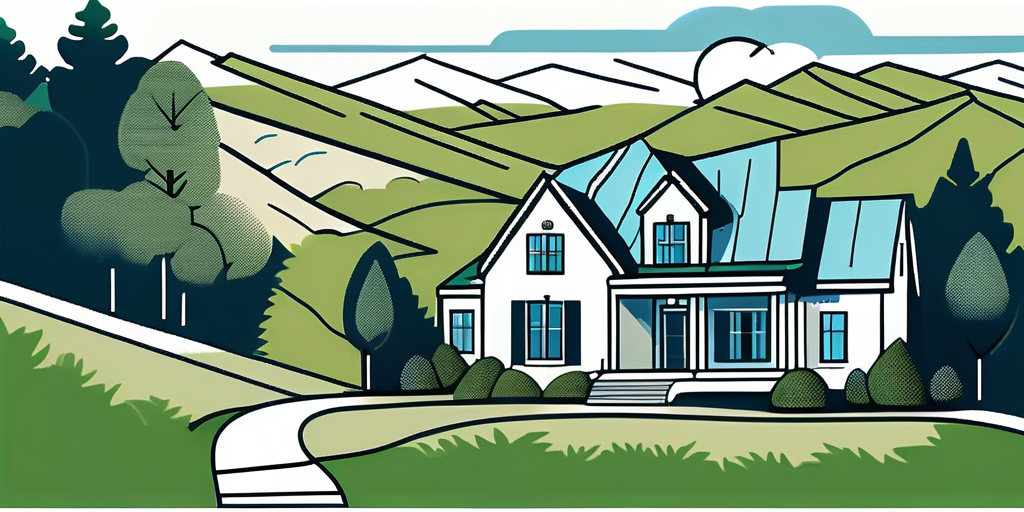
Building a home is an exciting journey, especially in the picturesque region of Tennessee National. With its stunning landscapes, vibrant community, and a plethora of outdoor activities, it offers a unique backdrop for your dream home. In this article, we will explore essential tips to help guide you through the intricacies of building a home in this beautiful area.
Before diving into your home-building project, it's crucial to familiarize yourself with the features of the Tennessee National landscape. This understanding will not only guide your design decisions but also facilitate a harmonious integration of your home within the natural surroundings.

Tennessee National boasts a diverse geography characterized by rolling hills, lush forests, and beautiful lakes. These geographical features create stunning views and also provide various outdoor recreational opportunities right at your doorstep. The area is home to a rich variety of flora and fauna, making it a paradise for nature enthusiasts and outdoor adventurers alike. Hiking trails weave through the dense woodlands, offering breathtaking vistas and a chance to observe wildlife in its natural habitat.
When planning your home, consider the orientation of your building site. Positioning your home to take advantage of the landscape can enhance the views from your windows, optimize natural light, and create a wonderful atmosphere that connects you with nature. Additionally, integrating outdoor living spaces, such as decks or patios, can further extend your enjoyment of the picturesque surroundings, allowing you to host gatherings or simply relax while soaking in the serene environment.
The climate in Tennessee National varies throughout the year, with humid summers and cool winters. This variation can significantly impact your home’s design and materials. It's essential to plan for proper insulation, efficient heating and cooling systems, and adequate drainage to manage the rainfall that the area can experience. The region's seasonal changes also present an opportunity to incorporate design elements that celebrate each season, such as large windows that frame the vibrant autumn foliage or outdoor fire pits for cozy winter evenings.
Being informed about local climate trends will help you choose the right materials and building techniques that will ensure your home remains comfortable year-round, while also reducing your energy costs. For instance, selecting energy-efficient windows and sustainable building materials can not only enhance your home's durability but also contribute to a lower environmental impact. Furthermore, considering the use of native plants in your landscaping can create a low-maintenance garden that thrives in the local climate, adding to the overall beauty and sustainability of your property.
A solid plan is one of the cornerstones of a successful home build. It allows for a smoother process and helps you avoid unexpected costs and delays. Here are two critical components to consider in your planning phase.

Establishing a realistic budget will help you make informed decisions throughout the building process. Take time to evaluate all potential expenses including land acquisition, construction costs, permits, and interior furnishings. This comprehensive approach ensures that you are not caught off guard by hidden fees or last-minute expenses that could derail your project.
By having a clear financial plan, you can ensure that your dream home remains within reach and is built without compromising quality. Additionally, consider consulting with a financial advisor who specializes in construction projects to gain further insights into managing your budget effectively.
The success of your home build greatly depends on the professionals you hire. Taking the time to select an architect and builder who understand your vision and are experienced with the local area can make all the difference. Their familiarity with Tennessee's building codes, climate considerations, and regional styles can enhance the overall design and functionality of your home.
With the right team in place, you will be well-prepared to bring your dream home to life. Moreover, fostering a collaborative relationship with your architect and builder can lead to innovative solutions that enhance your home’s design, ensuring it not only meets your needs but also reflects your personal style and values.
Compliance with local building regulations is essential when constructing your home. Understanding the legal requirements will save you time, money, and frustration during your project.
Tennessee National has specific building codes that must be followed to ensure safety and durability. Ensure that your architect and builder are well-versed in these codes, as they will be essential in obtaining the necessary permits.
Factors such as zoning laws, height restrictions, and safety standards can affect your design. By being aware of local regulations upfront, you can avoid costly changes down the line. Additionally, it’s important to consider how these codes may evolve over time. Staying informed about any updates or amendments to building codes can provide a competitive advantage and help you remain compliant throughout the construction process.
In addition to the standard building codes, there may also be environmental regulations specific to Tennessee National. These regulations are intended to protect the area’s natural resources and wildlife.
It's wise to engage with local environmental agencies or consultants to understand the impact of your build. Ensure that your plans reflect eco-friendly practices, such as responsible waste disposal and water management systems, to preserve the surrounding environment. Furthermore, incorporating sustainable materials and energy-efficient designs can not only help you meet these regulations but also reduce long-term operational costs. By prioritizing sustainability, you contribute positively to the community and set a precedent for future developments in the area.
With a clear plan and knowledgeable team, it's time to focus on designing your dream home. A well-thought-out design can reflect your personality while considering the unique elements of the Tennessee National landscape.

Embrace the natural beauty of Tennessee National by integrating local aesthetics into your home design. Use materials and colors that reflect the surrounding environment. For instance, stone facades, wooden beams, or soft earth tones can create a seamless connection between your home and the landscape.
Additionally, consider designing outdoor spaces that extend your living area, such as porches, decks, and gardens. These spaces not only enhance the architectural appeal of your home but also offer inviting areas for relaxation and entertainment. Imagine sipping your morning coffee on a spacious deck that overlooks the rolling hills, or hosting summer barbecues in a beautifully landscaped garden filled with native plants that attract butterflies and hummingbirds.
Incorporating energy-efficient features into your design can greatly enhance the comfort of your home. Focus on ensuring cross-ventilation for warmer months and creating warm, cozy spaces during the cooler seasons.
By keeping climate considerations in mind, you will create a comfortable and sustainable living environment. Additionally, consider the benefits of using high-quality insulation and energy-efficient windows, which can help maintain a consistent indoor temperature while reducing your energy bills. Incorporating smart home technology can also enhance your home's efficiency, allowing you to monitor and control energy usage from your smartphone, ensuring that your home remains both comfortable and eco-friendly throughout the year.
The choice of materials is crucial in ensuring the longevity and sustainability of your home. The right building materials will withstand the local climate while enhancing the aesthetic appeal of your property.
Incorporating sustainable materials into your home can reduce your ecological footprint. Look for local wood sources, recycled materials, and sustainable insulation options that are readily available in the region.
Not only do sustainable materials benefit the environment, but they often come with long-term cost savings due to their durability and energy efficiency. For instance, using bamboo flooring not only adds a unique touch to your interiors but is also a rapidly renewable resource. Additionally, opting for low-VOC paints and finishes can significantly improve indoor air quality, making your home healthier for you and your family.
Given the variable climate of Tennessee National, selecting weather-resistant materials is paramount. Features such as metal roofs, fiber-cement siding, and treated wood can provide added protection against severe weather.
Additionally, consider investing in high-quality windows and doors that can withstand fluctuating temperatures and humidity levels. Properly chosen materials will ensure that your home remains safe and comfortable for years to come. Beyond just functionality, integrating features like storm shutters or impact-resistant glass can further enhance your home’s resilience against storms, which are not uncommon in the region. Furthermore, using moisture-resistant materials in areas prone to humidity, such as bathrooms and kitchens, can prevent mold growth and prolong the life of your home’s structure.
When planning your build, it’s also wise to consider the orientation of your home and how it interacts with the natural landscape. Utilizing passive solar design principles can maximize natural light and reduce heating costs, while strategically placed overhangs can provide shade during the hot summer months. This thoughtful approach to building not only enhances energy efficiency but also creates a more comfortable living environment.